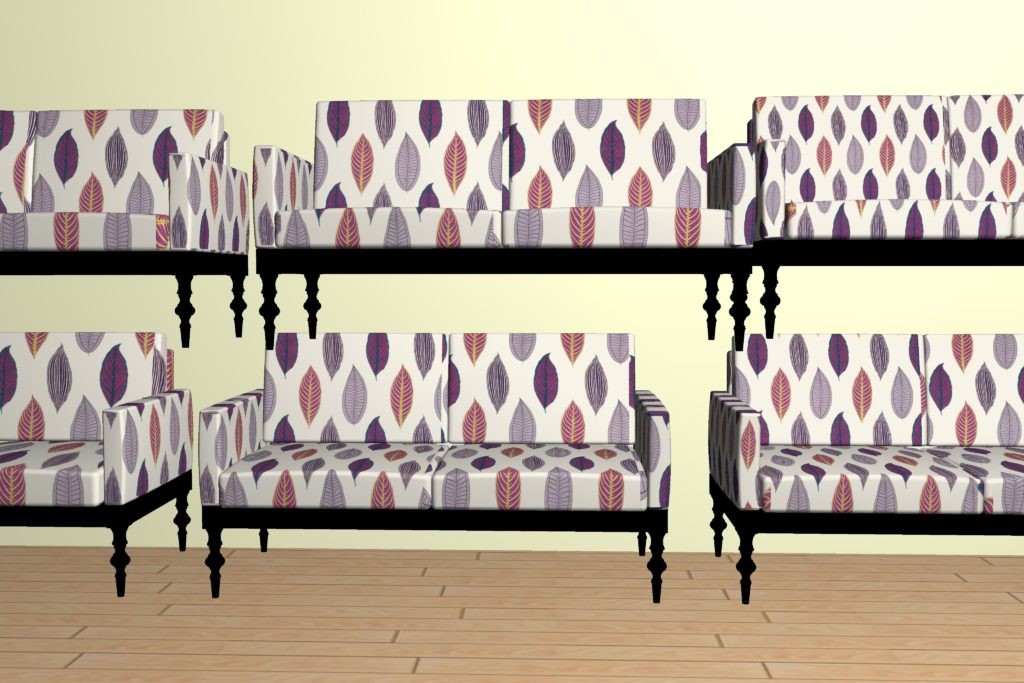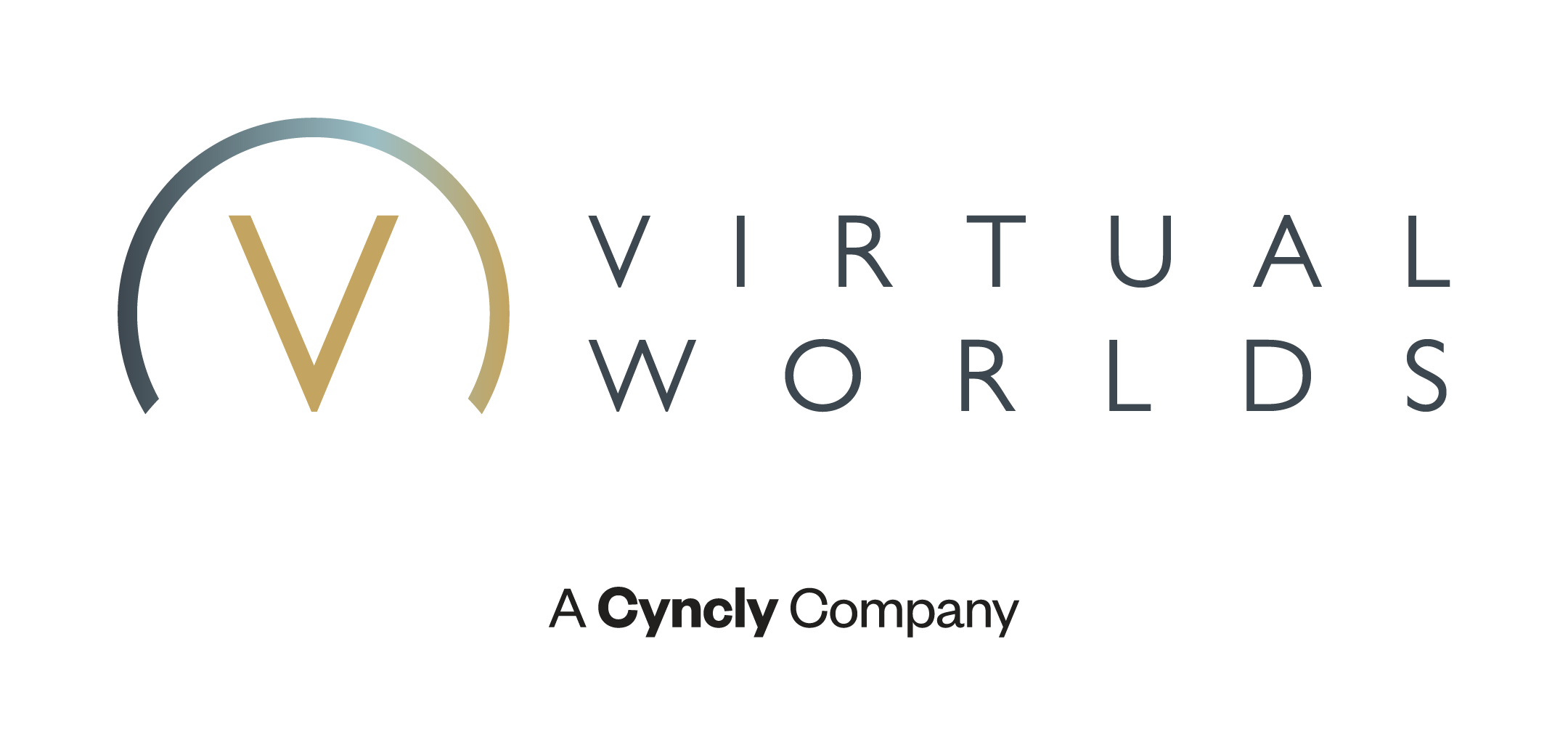Inspire, Create, Persuade
New breakthrough in fabrics and wallpapers for Interior design CAD

One of our major strategic aims is to expand the markets for Virtual Worlds as well as to increase its value and effectiveness for our existing users. In its traditional applications for kitchen, bathroom and bedroom planning Virtual Worlds is, we feel, the best design software around. However, to make it even better for Interior Designers generally, we thought we should address a major problem that confronts designers who wish to be totally flexible in the application of textures of wallpapers and fabrics. And the problem is…..? Well, it’s all to do with the nature of 3D models.
As you may know, the 3D model format that we use in Virtual Worlds is called 3ds (3D Studio). The reason why we use it is because it’s the most widely used 3D graphics format. Almost every modelling software package available anywhere is capable of exporting its models in 3ds format – if 3ds is not its native format, that is. 3ds is the world’s most widely used 3d format and this is because it is capable of having the most sophisticated and wide-ranging “characteristics” for materials and textures attached to it. Those characteristics are the means by which you get such superb representations of metals, wooden surfaces, glass surfaces etc. when you do a photo-realistic render in Virtual Worlds. The “renderer” is a separate software “engine” that we have built into the program. There are many companies around the world who design, build and market rendering software and they often market their renderers to users of 3D Studio-based software systems.
So what’s the textures problem?
It’s this. When you create a 3d model – in any modelling software package – the model has some coordinates as part of its definition. These are called “mapping” coordinates and they are fixed. So, if you modelled the elegant sofa in the picture (as we have done) your model has fixed mapping coordinates by which textures are applied to its surface. Let us further assume that the texture that you wish to apply is that of a specific textile upholstery fabric. The one we have used here is a fabric from US textile company, Osborn & Little. This fabric has a pattern which repeats, as do all fabric and wallpaper designs. The actual pattern repeat size is 76 centimetres North-Southand 52 centimetres East-West. So, if we want the fabric to look exactly right in virtual reality as in real life, then we have to fix the 3d model with those mapping coordinates. If the model had larger or smaller overall mapping coordinates, then the texture would be unnaturally stretched or contracted respectively. The 3D models used in the Virtual Worlds image above are all identical except that the mapping coordinates are different – and, if you look closely, you will see that the fabric pattern size is different on all six versions of the sofa. Only one of them is correct.
So, because there are infinite variations in real life fabric and wallpaper designs, applying them as textures to 3d models is a real headache because you have to change an aspect of the model’s definition each time in order for the fabric to look as it should. The leaf shapes in this fabric could be 35 mm wide or they could be 350mm wide.
Well, maybe you can guess now what we’ve done. Our Head of Programming has come up with the answer – I call it “intelligent textures”.
We have devised a dynamic texture file capability which allows us to mathematically re-adjust a texture’s mapping coordinates to compensate for what it finds in the 3d model file of the object to which the texture is to be applied. And that means that we don’t have to make any changes at all to the original model – and there are many, many millions of 3ds models in existence, not just those that come out of the Logicom Modelling Department.
If we have the pattern repeat properly measured and fully visible in the image that we use it’s job done. So we can model a manufacturer’s range of sofas, for example, and then apply any fabric at all to it and it will be visually (and mathematically) correct. We can even do the “frilly” extras, to us they are just a separate geometry in the model of the object. So, we can apply different fabric textures to the main body of a curtain, to the tie-back and to the pelmet over the curtain. You can even have a different fabric texture on the piping on your cushions or sofa squabs. This is fantastic, especially for a designer using Virtual Worlds. Anything using a fabric or a wallpaper can be properly visualised. There’s loads of applications. Here’s just a few: curtains, cushions, sofas, armchairs, wallpapers, duvet covers, pillow cases, blinds,blankets, carpets…the list is endless.
Finally, we even have it working “live” on the Web. The “Fabrics” visualiser is just one of the application ideas on our new, web developments Test Site. I’ll tell you about the others in my next blog but go and try this one out now and let anyone you know who is involved in designing domestic interiors or selling fabrics or furniture know all about it.
Go to our Test Site at vso.logicom.com – just type that into the address bar, no need for www etc.
In the 3rd box down, hover your mouse over “VW3DWebViewer” and left click when it turns “red”. This loads the Active X controls for the Web Viewer functions. This only needs to be done once on your PC (like loading Flash or Adobe Reader).
In the 4th box down, left click on left-most icon “Live Design Viewer”. This will load some options lower left which can be scrolled down. The one at the top of the scroll is a sofa. Left click on the sofa image and the room will load up.
This “Operation Mode” has its own scroll window of options like, Fly, Spin, Views, Actions etc
The system automatically goes into Fly mode as soon as you left click anywhere on the Viewer screen area.With your left mouse button you can fly forward by left-clicking and holding the left mouse button directly above the centrepoint of the screen, and backwards by left clicking centrally below the centrepoint. If you move the cursor to the left of centre, click and hold, you will pan left, and the opposite move (right of centre) pans you right. With the right mouse button you move your physical body position by clicking above, below, left or right of centre. To raise your head and look up, press both left and right mouse buttons above the screen centrepoint. To nod downwards, press left and right simultaneously below the screen centrepoint. With all of these mouse command actions the further from the centrepoint that you place the cursor, the faster you “fly”.
If you select Fly in the Operation Mode Options window, it will open a set of simple “click on the button” commands that provide the same flying options as described.
In the Operation Mode scroll window, select “Options” and this will launch on the right of the screen the options for Curtains, Wall Finishes, Cushions, Piping and Upholstery and the Osborn & Little and Laura Ashley fabric textures.
Don’t forget, this is not the finished article yet but, hopefully, you can have some fun and get used to the functions.
If you want to know more about what’s cooking in Virtual Worlds and in Virtual “WebWorlds” then tune in again for my next posting.
Bye for now
Jim
